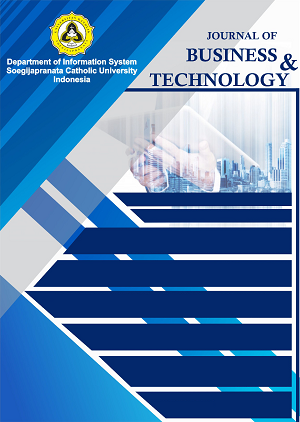Ecommerce Website Development for Melisa Baby and Kids Shop
Abstract
Keywords
Full Text:
PDFReferences
[1] R. Sanjaya and J. Tarigan, Creative Digital Marketing. Jakarta : PT. Elex Media Komputindo., 2009.
S. Kemp, “Digital 2021: Indonesia,” www.datareportal.com, 2021. https://datareportal.com/reports/digital-2021-indonesia
B. R. Ramadhani, D. P. Ayuningtyas, N. A. Rahayu, R. Robiansyah, R. F. Andhika, and D. Hidayat, “Pola Komunikasi Karyawan Pada Masa Work From Home,” J. Digit. Media dan Relatsh., vol. 3, no. 1, pp. 24–29, 2021, doi: 10.51977/jdigital.v3i1.512.
A. Krizanova, G. Lazaroiu, L. Gajanova, J. Kliestikova, M. Nadanyiova, and D. Moravcikova, “The Effectiveness of Marketing Communication and Importance of Its Evaluation in an Online Environment,” Sustain., vol. 11, no. 24, pp. 0–19, 2019, doi: 10.3390/su11247016.
H. P. Pratyaharani, A. I. Suroso, and J. Ratono, “Pengaruh Harga, Citra Merek, Kualitas Produk dan Gaya Hidup Terhadap Keputusan Pembelian Perlengkapan Bayi Bagi Ibu Milenial,” J. Apl. Bisnis dan Manaj., vol. 8, no. 3, pp. 846–855, 2022, doi: 10.17358/jabm.8.3.846.
H. K. Aroral, “Waterfall Process Operations in the Fast-paced World: Project Management Exploratory Analysis,” vol. 6, no. 1, pp. 91–99, 2021.
M. Heera, “WordPress As A CMS,” no. May, 2019.
F. R. Pratama, N. Santoso, and L. Fanani, “Pengembangan Aplikasi E-Commerce Menggunakan Payment Gateway Midtrans,” J. Pengemb. Teknol. Inf. dan Ilmu Komput., vol. 4, no. 4, pp. 1133–1140, 2020.
S. J. A. Tandel, “Impact of progressive web apps on web app development,” Int. J. Innov. Res. Sci. Eng. Technol., vol. 7, no. 9, pp. 9439–9444, 2018, doi: 10.15680/IJIRSET.2018.0709021.
E. Pawan, R. H. . Thamrin, P. Hasan, S. H. Y. Bei, and P. Matu, “Using Waterfall Method to Design Information System of SPMI STIMIK Sepuluh Nopember Jayapura,” Int. J. Comput. Inf. Syst., vol. 2, no. 2, pp. 33–38, 2021, doi: 10.29040/ijcis.v2i2.29.
DOI: https://doi.org/10.24167/jbt.v3i1.6438
Refbacks
- There are currently no refbacks.
e-ISSN: 2776-0332 | View My Stats



